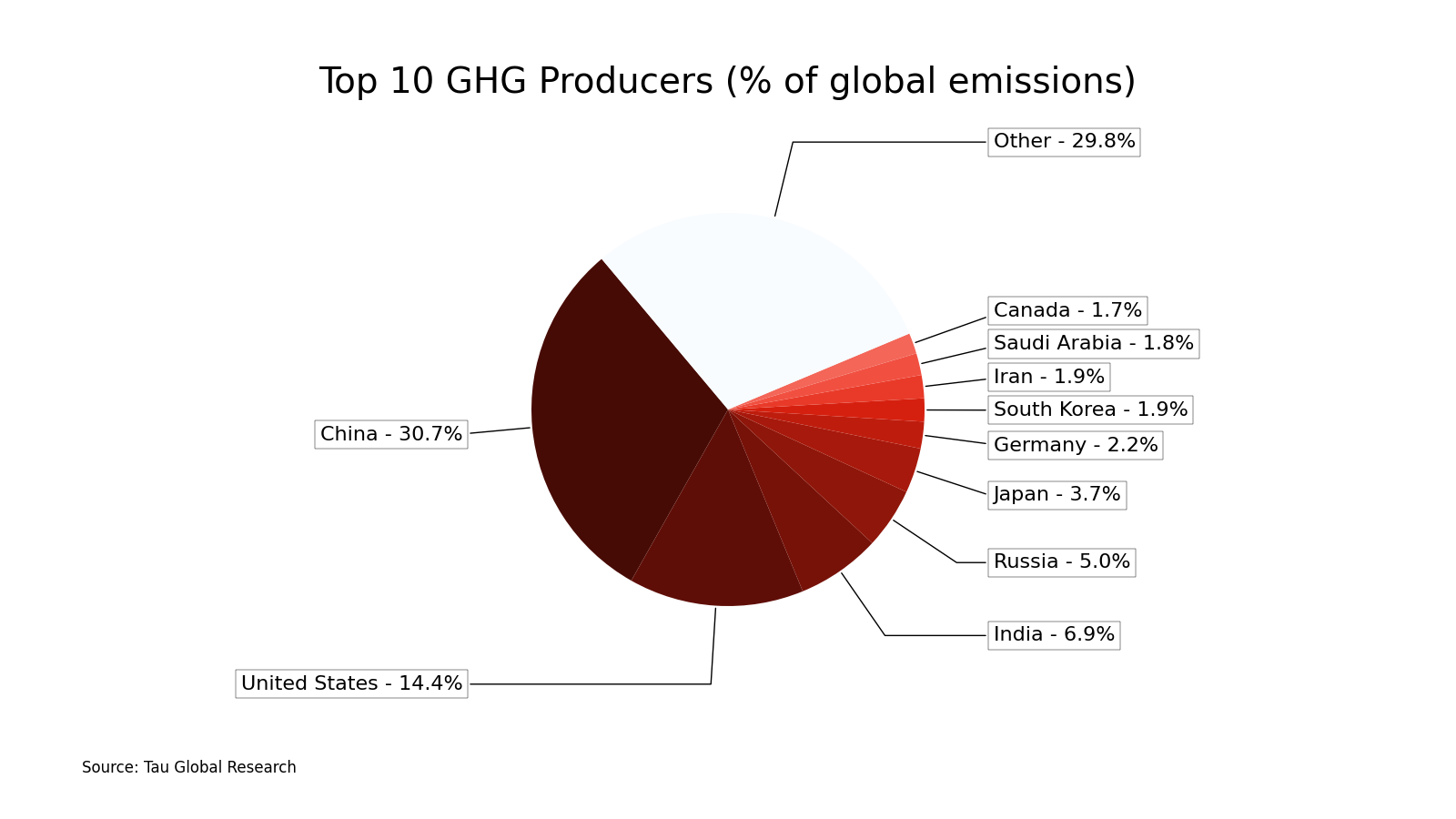SEC Proposal Addresses GHG Emissions Challenge

The SEC's proposed rule changes regarding corporate reporting of Scope 1 and 2, and under certain circumstances, Scope 3 greenhouse-gas (GHG) emissions, strike a middle ground between the view that strong, relentless government regulation is needed to address climate-change and the view that the market should decide everything.
By having companies report their emissions – which in itself will enforce a discipline upon them to document and more closely manage their carbon profile across the scopes – investors and consumers can now witness and compare companies as they achieve progress (or not) with respect to their GHG emissions.
The World's GHG Emissions
Related to this new focus on corporate emissions, research I've been doing for the past couple of years at Tau Global Research addresses total emissions on a national scale. By examining total CO2 emissions by 145 nations of the world, renewable power grids, governmental effectiveness, and local economic conditions, I've derived a formula that measures the relative challenge facing each nation in achieving significant progress in reducing its carbon footprint.
The results so far have not been great. I boil the numbers down to challenges expressed in natural logarithms – so a 1-magnitude difference is 2.7X, two magnitudes is 7.4X, and three magnitudes is about 20X.
Doing this finds that each of the top four emissions producers – China, the US, India, and Russia – face the most dire challenges, each of them facing a challenge that's 20X the difficulty of the least-difficult challenges in the world.
Rounding out the Top 10 emissions producers are Japan, Germany, South Korea, Iran, Saudi Arabia, and Canada, each facing difficult to dire challenges in addressing their national carbon footprints. Other large emissions producers facing dire challenges include Indonesia, Brazil, Mexico, and South Africa. Turkey and Australia face difficult challenges as well.

The least-difficult challenges, by the way, are lightly populated nations in Scandinavia and the Baltics, along with Switzerland, New Zealand, and a number of small developing nations lacking economies sufficient to contribute significant GHGs.
The Emissions Reduction Challenge Index
These findings, which I call the Emissions Reduction Challenge (ERC) Index, heavily factor a nation's socioeconomic ability to address its challenges. Developing nations, India and Indonesia for example, can have priorities higher than addressing GHG dramatically. Some developed nations such as the United States and Australia may lack the political and societal concern and will to achieve significant progress.
China is well-known as the biggest player of all, responsible for 31% of all the world's GHG emissions, and difficult to pinpoint as to what substantial progress its opaque government truly wishes. Russia is more of a wild card than ever in the present timeframe.
There are some relative bright spots within the overall dark emissions-reduction landscape. The UK and France, for example, face challenges only about 15% the size of the United States. Switzerland has the wealth and apparent discipline to be a green leader, along with Scandinavia and the Baltics.
A group of countries in eastern Europe that includes Croatia and Slovenia. Smaller nations including Iceland and Ireland in Europe, Costa Rica and Uruguay in South America, and Rwanda in Africa are also as green as nations can be at this time.
I look forward to the SEC deciding to implement its proposed new rules and for the world's corporations large and small to monitor and then substantially improve their carbon footprints. Doing so will go a long ways in reducing the national carbon footprints of the countries in which they operate, particularly the United States. I hope to see my ERC Index show consequent improvement as well.